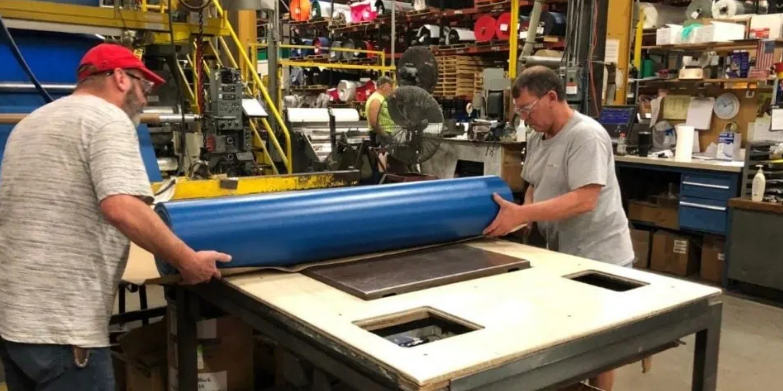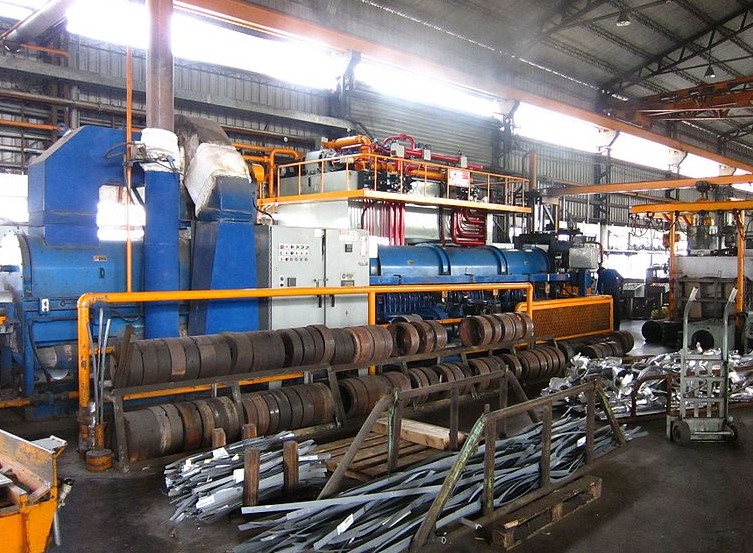Extrusion is a manufacturing process where material is pushed through a die to create objects with a fixed cross-sectional profile.
Understanding Extrusion in Manufacturing
Definition and Overview of Extrusion
Extrusion is a manufacturing process where materials, such as metal or plastic, are forced through a die to create objects with a fixed cross-sectional profile. This process is essential for producing a wide range of items, from simple pipes and tubes to complex profiles for window frames and automotive parts. The key to extrusion’s widespread use lies in its ability to create uniform, high-quality products with excellent material efficiency.

Material Versatility: Extrusion can handle various materials, including aluminum, steel, and numerous plastics, each offering unique properties like strength, flexibility, and resistance to environmental factors.
Cost-Effectiveness: While the initial investment in extrusion machinery can be significant, the process is cost-efficient for large-scale production due to its high throughput and minimal material waste.
History and Evolution of the Extrusion Process
The extrusion process has evolved significantly since its inception. Originally developed for metal processing in the early 19th century, extrusion has expanded to include plastics and other materials. The technological advancements over the years have enhanced the process’s efficiency and versatility, making it a cornerstone in modern manufacturing.
Early Beginnings: The first patented extrusion process in 1797 focused on lead pipe manufacturing.
Technological Progress: Advancements in machinery and materials have expanded extrusion applications, improving both the speed and quality of the extruded products.
Future Trends: The ongoing development in extrusion technology points toward higher precision, greater material variety, and increased sustainability.
Extrusion continues to be a vital part of manufacturing, adapting to new challenges and innovations. Its ability to produce diverse products efficiently makes it indispensable in many industries. For further exploration, Extrusion’s Wikipedia page offers extensive information.
Different Types of Extrusion Processes
The extrusion process varies based on temperature and scale, with each type offering unique benefits and challenges. Below is a detailed comparison of hot extrusion, cold extrusion, and micro-extrusion.
| Extrusion Type | Hot Extrusion | Cold Extrusion | Micro-Extrusion |
|---|---|---|---|
| Process Description | Involves heating the material before forcing it through a die. | Material is extruded at room temperature or slightly above. | Used for creating extremely small and precise parts. |
| Materials Used | Metals like aluminum, copper, and steel. | Plastics, aluminum, and other soft metals. | Specialized plastics and metals for high-precision applications. |
| Typical Applications | Structural components, pipes, and tubes. | Automotive parts, screws, and electronic components. | Medical devices, microelectronics, and precision engineering. |
| Efficiency | High efficiency for large-scale production. | More energy-efficient compared to hot extrusion. | Focused on precision rather than speed. |
| Costs | Higher energy costs due to heating. | Lower operational costs but limited to certain materials. | Higher due to specialized equipment and materials. |
| Advantages | Excellent for large and complex shapes. | Better surface finish and material strength. | Exceptional precision and detail for small components. |
| Challenges | Requires significant energy input and machinery. | Limited to materials that can be extruded cold. | Complex process requiring advanced technology. |
Hot Extrusion excels in handling large and complex shapes but comes with higher energy costs. Cold Extrusion is more energy-efficient and provides a better surface finish, though it’s limited in material choices. Micro-Extrusion stands out for precision in small components, but requires sophisticated equipment and materials.
These diverse extrusion processes cater to different manufacturing needs, balancing factors like cost, material properties, and product specifications. To explore more about these processes, visit Extrusion Processes on Wikipedia.
Materials Used in Extrusion
Metals in Extrusion
Metals are a fundamental part of the extrusion process, especially in industrial and construction applications. Aluminum is particularly popular in extrusion due to its lightweight nature and excellent strength-to-weight ratio. It’s cost-effective too, with prices typically ranging from $0.80 to $1.20 per pound. Aluminum extrusions are common in automotive and aerospace industries for parts that require both strength and lightness.
Steel is another key player, known for its higher strength and durability. It’s ideal for heavy-duty applications but is more expensive, costing around $0.30 to $0.80 per pound.
Copper, with its superior electrical and thermal conductivity, finds its place in electrical applications. However, its cost, often exceeding $3 per pound, can be a limiting factor.
Plastics and Polymers for Extrusion
Plastics and polymers offer versatility and customization in extrusion, making them ideal for consumer products and packaging. Polyethylene (PE), ranging from $0.50 to $2 per pound, is widely used for its flexibility and durability. It’s a standard choice for packaging films, containers, and piping.
Polyvinyl Chloride (PVC), known for its rigidity and chemical resistance, is commonly used in construction for pipes and window frames. Its cost varies between $0.50 and $1.50 per pound.
Polystyrene (PS), valued for its clear and glossy finish, is often used in consumer products. It’s relatively affordable, with prices around $0.90 to $1.20 per pound.
Each material used in extrusion brings unique properties to the table, influencing the final product’s characteristics. The choice depends on factors like cost, strength, flexibility, and application-specific requirements. For more detailed information on these materials, one can explore Materials in Extrusion on Wikipedia.
Extrusion Process and Machinery
Components of an Extrusion Machine
An extrusion machine is a complex assembly of various parts, each playing a crucial role in the extrusion process. The main components include:
Hopper: This is where the raw material is fed into the machine. It’s designed to handle different materials, from plastics to metals.
Barrel and Screw: The heart of the machine. The screw, powered by an electric motor typically ranging from 15 to 500 kW, depending on the machine size, pushes the material through the heated barrel.
Heater: Essential for maintaining the right temperature, crucial for both melting the material and ensuring consistent flow.
Die: This is where the material takes its final shape. Dies can vary widely in complexity and design, influencing both cost and maintenance requirements.
Cooling System: Often includes water baths or cooling fans to solidify the extruded product quickly and maintain its shape.
The Extrusion Process: Step-by-Step
The extrusion process involves several key steps to transform raw materials into finished products:

Feeding the Material: Raw material is loaded into the hopper.
Melting and Mixing: The material is then heated and mixed in the barrel by the rotating screw.
Extruding: The molten material is forced through the die, acquiring its shape.
Cooling and Solidification: As the material exits the die, it is cooled to solidify in its final form.
Each step in the extrusion process is critical for ensuring the quality and consistency of the final product. The cost-effectiveness of extrusion largely depends on the efficiency of this process and the lifespan of the machinery, which can be significant with proper maintenance. For further exploration, Extrusion Process on Wikipedia offers additional insights.




